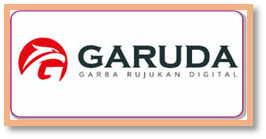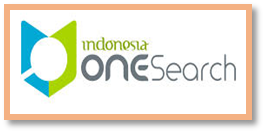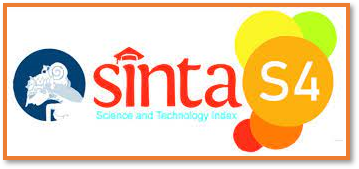Author Guidelines
Jurnal Kesehatan Pasak Bumi Kalimantan (JKPBK) is a scientific publication that is published periodically by the medical faculty of the University of Mulawarman, Samarinda. This journal receives writings/articles in the form of original research relevant to the field of medicine, nursing, and health, literature review, case reports, with the following conditions:
Original Research
It contains articles about original research results in basic or applied / clinical medicine and health. The format of the research article consists of Title, Abstract (Indonesian and English), Introduction, Methods, Results, Discussion, Conclusions, and Bibliography.
Literature review
The Literature review Is a review of articles (reviews) on the latest medical and health sciences. The literature review format consists of Title, Abstract (Indonesian and English), Introduction, Content, and Bibliography. The manuscript should contain a comprehensive analysis of a specific topic and limited to 5000 words. An unstructured abstract should be performed for this manuscript. The manuscript should describe the problem and contain enough resource material for related research. The discussion should be appropriate with the issues discussed in the literature review, mixed with opinions and arguments, which are relevant to the problems. The conclusion should be according to the summary and discussion.
Case Report
It contains articles about cases in the medical and health sciences that need attention to be disseminated. The case report format consists of Title, Abstract (Indonesian and English), Introduction, Cases, Discussion, and Bibliography. Case report usually describes one to three patients or a single family. Case report containing a substantial novel finding should be unique, representing a diagnostic or therapeutic challenge and having a learning point for the readers. The title page: The words “case report” or “case study” should appear in the title along with the phenomenon of greatest interest (e.g., symptom, diagnosis, test, intervention).
Abstract: An unstructured abstract should be performed for a case report. An abstract should consist Introduction (What does this case add), case presentation (The main symptoms of the patient, the main clinical findings, the main diagnoses and interventions. and the main outcomes), and conclusion (What were the main “take-away” lessons from this case). The abstract should be limited to a maximum of 250 words. A case report is limited to 2000 words. To find and download the Microsoft Word template. https://drive.google.com/open?id=16xwI1Js-Hq--vNXTnVF4iwqvpye0DzRa
The text of a case report should be made a brief but complete (adopted from CARE guidelines):
- Introduction: should contain the definition and background of the problem, or experience of other people's writing briefly about the same issues and the interests of the case, a reason for reporting.
- Case description: Describe the relevant patient information, physical examination findings, diagnostic methods, therapeutic intervention, follow-up, and outcomes.
- Patient information: consist of demographic information (eg, age, gender, ethnicity, occupation), main symptoms of the patient (his or her chief complaints), medical, family, and psychosocial history—including diet, lifestyle, and genetic information whenever possible, and details about relevant comorbidities including past interventions and their outcomes.
- Diagnostic methods: include laboratory testing, imaging, questionnaires, diagnostic challenges (e.g., financial, language/cultural), diagnostic reasoning including other diagnoses considered and prognostic characteristics (e.g., staging) where applicable.
- Follow-up and outcomes: Summarize the clinical course of all follow-up visits including Clinician and patient-assessed outcomes, Important follow-up test results (positive or negative), intervention adherence and tolerability (and how this was assessed), and adverse and unanticipated events.
- Discussion: The strengths and limitations of the management of the case, The relevant medical literature, the rationale for conclusions (including assessments of cause and effect, and the main “take-away” lessons of this case report. Review of Literature should be appropriate and closely related to the case. Rooted in the study of literature is made, then made a summary as a basis for discussion.
- Conclusion, references and other provisions of writing are similar to those of the original article.
General Instructions
To avoid duplication, JKPBK does not accept articles that have been published or are being submitted to other magazines, by signing a STATEMENT. The author must ensure that all co-authors have agreed. All articles will be discussed by experts in the appropriate scientific field (peer-review) and the editorial board. Articles that need improvement are returned to the author. Research articles must obtain ethics committee approval or consider aspects of research ethics that can be accounted for.
Article Writing
Articles are typed following THIS JOURNAL TEMPLATE. Articles are sent in softcopy in MICROSOFT WORD
Title page
The title page contains the title of the article, the name of the author without a title, the affiliation of the author, the name and address of the correspondence, telephone number, facsimile number, and e-mail address. Article title must be less than 25 words.
Abstract and Keywords
Abstracts for research articles, literature reviews, and case reports made in Indonesian and English, a maximum of 250 words. The abstract is concise and clear according to the format of introduction, methods, results, and discussion (IMRAD). Choose 3-5 keywords that can help with indexing.
Article Text
The text of the article is arranged according to the appropriate chapters, namely Introduction, Methods, Results, Discussion, and Conclusions. Article text is typed using Arial 9 letters with a spacing of 1.5. The maximum number of pages for an article is 10 pages, including Bibliography.
Table
Tables are made sequentially and typed using the letters Arial 8 with a space of 1. Each table must be given a short title. Place explanations and abbreviations in the table description, not in the table title. The maximum number of tables is 4. The format of the table uses only horizontal lines (vertical is omitted), taking into account the data groups that need to be separated by lines.
Picture
The image entered in the article. Images of people who might be recognizable or illustrations that have been published must be accompanied by written permission. Images must be numbered in accordance with the appearance in the text. The maximum number of images is 4 pieces.
Statistical Method
Explain statistical methods in detail and clear in the Methods section.
Acknolegments
Acknowledgments can be given to research contributors.
References
References are written according to Vancouver writing rules, numbered according to the appearance in the article, not in alphabetical order. Provide the name of the author a maximum of 6 people, if more, write the name of the first 6 people, then et al. The number of references between 20-30 pieces, a minimum of 85% comes from the last 10 years.
Reference is sought from the primary literature, as little as possible secondary literature. Avoid using abstracts as references. References from articles to be published by certain magazines must be written: "in the press".
Avoid references in the form of personal communication (personal communication) except for the information that might not be obtained from public sources. Enter the name of the source, date of communication, written permission, and confirmation of the accuracy of the communication source.
Examples of correct forms of references
Journal Article with Individual Author
Winarno ANS. Kerley a line in an 18-year-old female with acute pulmonary edema and chronic kidney disease stage V. Jurnal Kedokteran dan Kesehatan Indonesia. 2017;8(1):38–44.
Journal Article with Organizational Author
Diabetes Prevention Program Research Group. Hypertension, insulin, and proinsulin in participants with impaired glucose tolerance. Hypertension. 2002;40(5):679–86.
Journal Article from Internet
Goodyear-Smith FA, Arroll B. Contraception before and after termination of pregnancy: can we do it better? [Internet]. Vol. 116, The New Zealand medical journal. 2003. p. U683. Available from: http://www.ncbi.nlm.nih.gov/pubmed/14657966
Book named by Editor as Author
Lewis G. Why Mothers Die. Report on confidential enquiries into maternal deaths in the United Kingdom, 2000-2002. Lewis G, editor. London: RCOG Press; 2004.
Books Written by Individuals
Lock S. Death in Childbirth: An International Study of Maternal Care and Maternal Mortality 1800-1950. London: Oxford University Press; 1992. 338–339. p.
Books Written by Organization
Council of Europe. Recent Demographic Developments in Europe 2004. Strasbourg, France: Council of Europe Publishing; 2005.
Article from Buletin
Ali MM, Cleland J, Shah IH. Condom use within marriage: A neglected HIV intervention. Bulletin of the World Health Organization. 2004;180–6.
Paper Presented at the Scientific Meeting / Conference
Desrini S, Ghiffary HM. Comparison of antibacterial activity of Talok (Muntingia calabura L) leaves ethanolic and n-hexane extracts on Propionibacterium acnes. In: AIP Conference Proceedings. 2018.
Chapter in Book
Singh S, Henshaw SK, Berensten K. Abortion: a worldwide overview. In: Basu AM, editor. The Sociocultural and Political Aspects of Abortion: Global Perspectives. Westport: Praeger Publishers; 2003. p. 15–47.
Data from Internet
U.S. Bureau of the Census. International Data Base [Internet]. China; 2007 [cited 2009 Aug 12]. Available from: http://www.census.gov/ipc/www/idb/country/chportal.html
Dissertation / Thesis
Kinyanda E. Deliberate self-harm in urban Uganda?: a case-control study. Norwegian University of Science and Technology; 2006.
Paper in Newspaper
Banzai VK, Beto JA. Treatment of Lupus Nephritis. The Jakarta Post. 1989 Dec 8;A5 (col 3).
Dictionary / Ensiklopedia
Saunders E. Dorland’s Illustrated Medical Dictionary. In: 27th ed. 2012. p. 632–1940.










